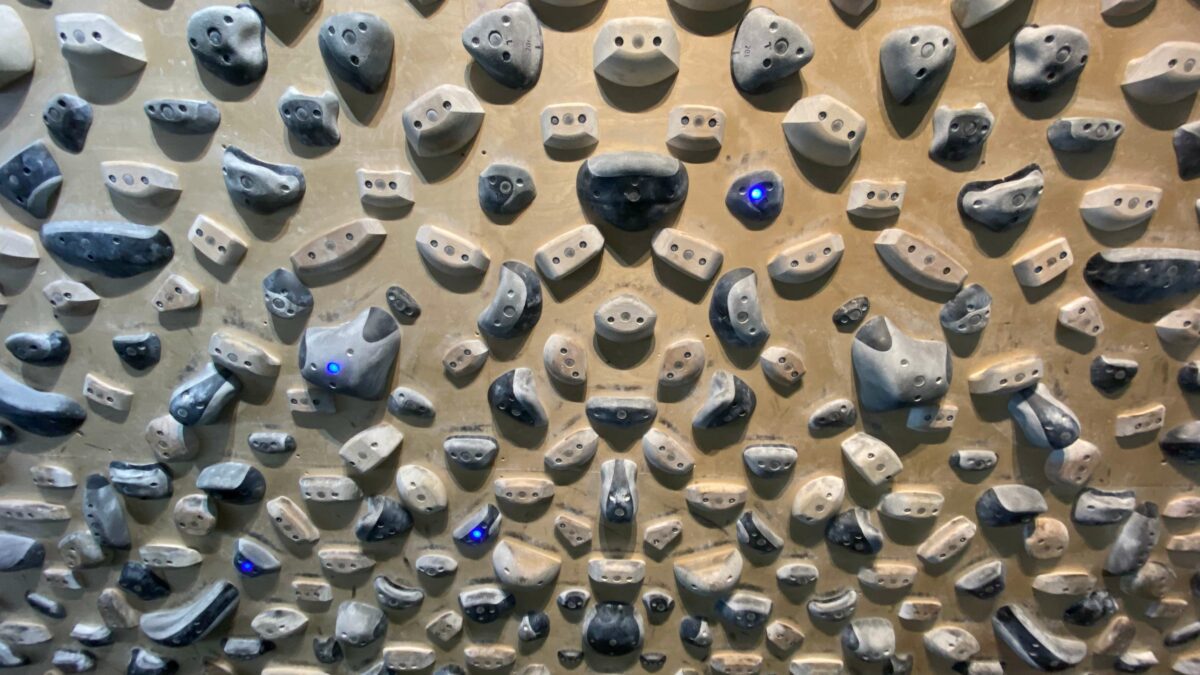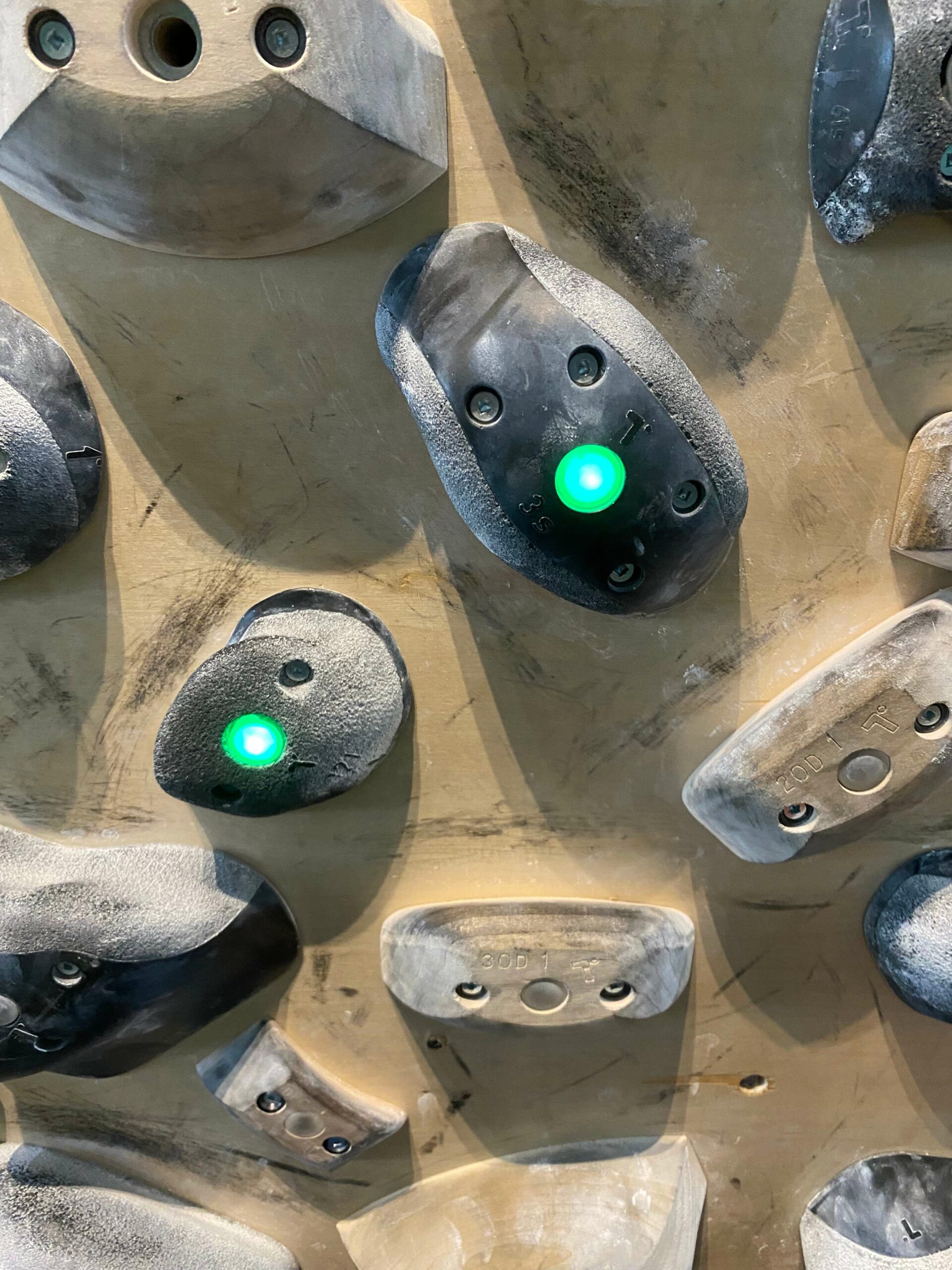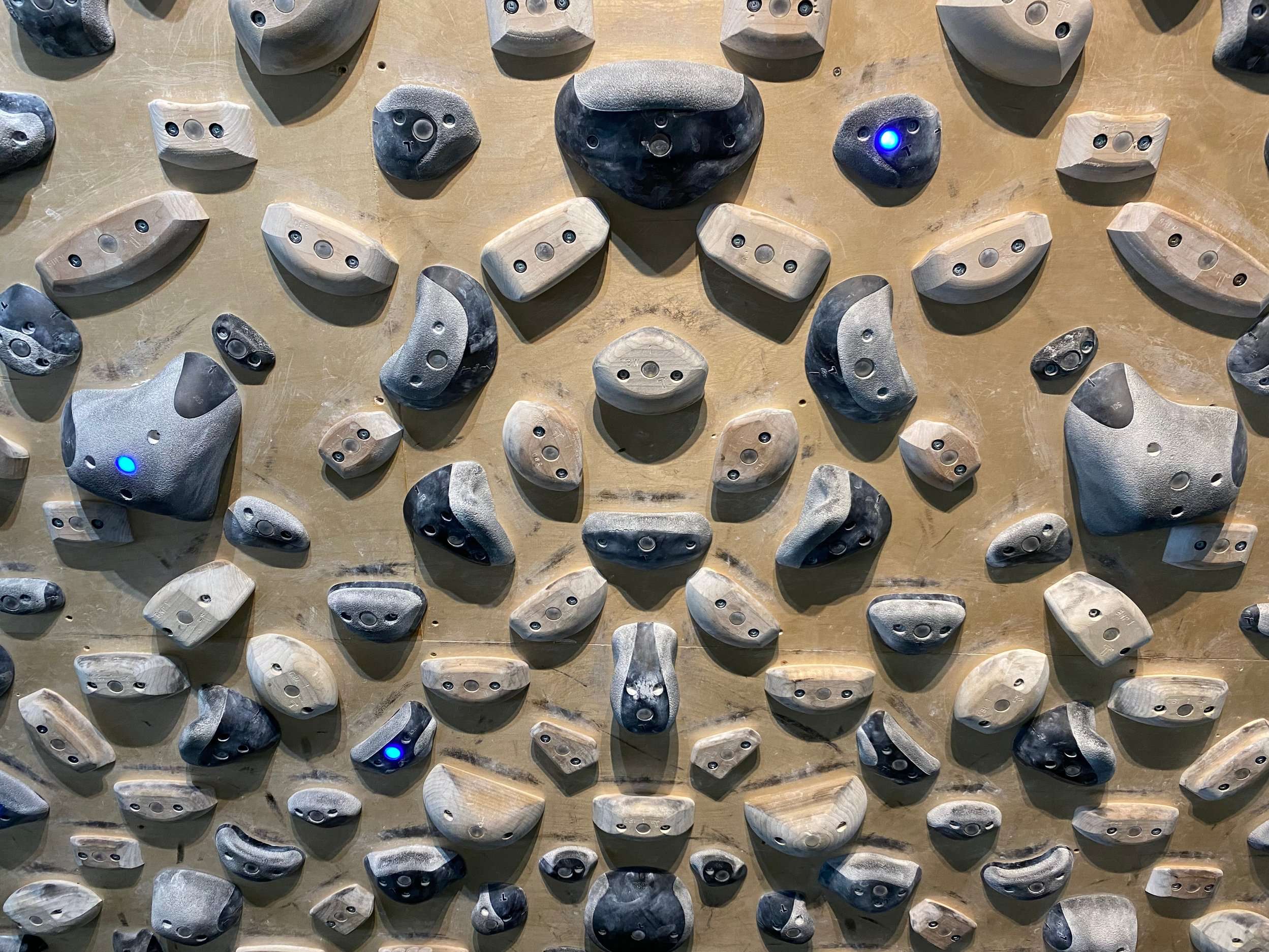How to Use a Tension Board
The Tension Board 2 is one of the best boards on the market for advancing your strength and skills as a climber

The Tension Board 2 is a perfect training tool for building strength, power, and technique. It’s also a total blast – proper Type 1 fun climbing. The board is the successor of the Tension Board 1 and it’s easily one of the best on the market. The hold set contains a lot of variety – crimps, edges, pinches, underclings, slopers. In general, they’re less fingery than the MoonBoard, but less juggy than the Kilter Board. The mix of wood and dual-texture plastic holds is perfect for skin management. The board features lots of small and smeary feet, excellent for honing technical footwork.
The Tension Board 2 can be set in two different layouts: mirror or spray. The mirror layout appears to be most common. It features bilateral symmetry, with the left and right sides of the board being mirror images of each other. This layout is incredible for working on weaknesses and keeping the body balanced. It’s often shocking how extra difficult a problem can feel in one orientation versus the other. The board is often set on an adjustable wall, meaning the angle can be changed. A problem that feels easy at 40 degrees can feel absolutely desperate five or 10 degrees steeper.
If you’ve never used a Tension Board before, this article is for you. Jumping on a new LED board for the first time can be intimidating, especially if there are a bunch of super strong climbers on the board. This short article will help you get up to speed with how to use a Tension Board – getting set up, some climbing rules, and a few points on etiquette.
Getting Set Up
To control the Tension Board, you need to use your phone. The first step is downloading the Tension Board 2 app. With Bluetooth enabled, enable the app to use your phone’s GPS to find your gym’s Tension Board on a map. Click on your gym in the map and you’ll enter your gym’s Tension Board page. Tap on “All Climbs” to browse through the available boulder problems on the board. If the board is adjustable, choose the wall angle. Otherwise, the angle should already be set up for you.
When searching for a problem you’d like to climb, you can set minimum and maximum grades to narrow your search. You can also filter in or out problems you’ve previously sent, attempted, or not attempted. For each problem, the app shows you FA information, how many others have sent the problem, a star rating, and a link to Instagram videos for beta.
Once you’ve found the problem you want to try – and it’s your turn to climb (more on this later) – select the problem in the app and then tap the lightbulb icon to connect your device to the board. The problem will then light up on the board. If you send the problem, you can log your ascent by clicking the checkmark icon. You can enter in how many attempts it took you and give it a star and difficulty rating.
After trying the problem, you can tap the arrows icon to try the mirrored version of the problem. It’s amazing how different a problem can feel when mirrored!
The Rules
What are the rules of the Tension Board? The starting holds are lit up green. If there are two green holds, start with one hand on each. If there is only one green hold, start matched on it. Finish holds are red. To send a problem, you must finish with both hands matched on the red hold.
In between the green start holds and purple finishing hold there will be purple and blue holds smattered about the board. The purple holds are for your feet only. Do not grab them with your hands. The blue holds can be used by your hands and feet. As you climb a problem, do your best not to dab any unlit holds on the board. This can be tricky, especially when you swing out and back in after cutting feet during a dynamic move.
Board Angle & Etiquette
Tension Boards are super fun, and because of this, they can get extremely busy. At most gyms with adjustable Tension Boards, the angle of the board is usually chosen through group consensus. If the angle is too steep or too vert for your liking and there is no one else at the board, ask a gym staff member to change the angle for you. If there are other climbers already using the board, inquire with them (politely) if they’d be open to an angle change. Be open to trying different angles, as this will work your weaknesses.
Following some general rules of etiquette makes Tension Boarding more fun for everyone:
- Stay off the matts and out of the fall zone when you’re not climbing.
- Don’t put your chalk bag, shoes, water bottle or any other personal item under the Tension Board where someone could fall or trip on it.
- Wait your turn an don’t cut in line – a natural rhythm will develop. If you’re unsure if it’s your turn, ask the other climbers if you can give your problem a go.
- Never light up your problem while someone else is climbing theirs.
- Don’t give beta or tell someone how they should climb unless they ask.
- And as always, brush the holds.





